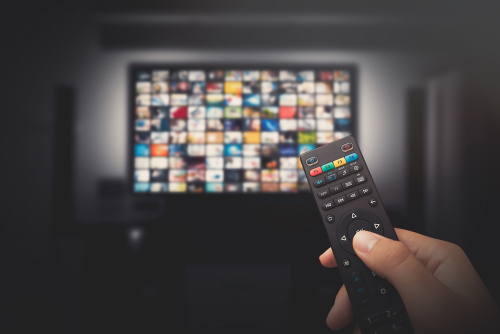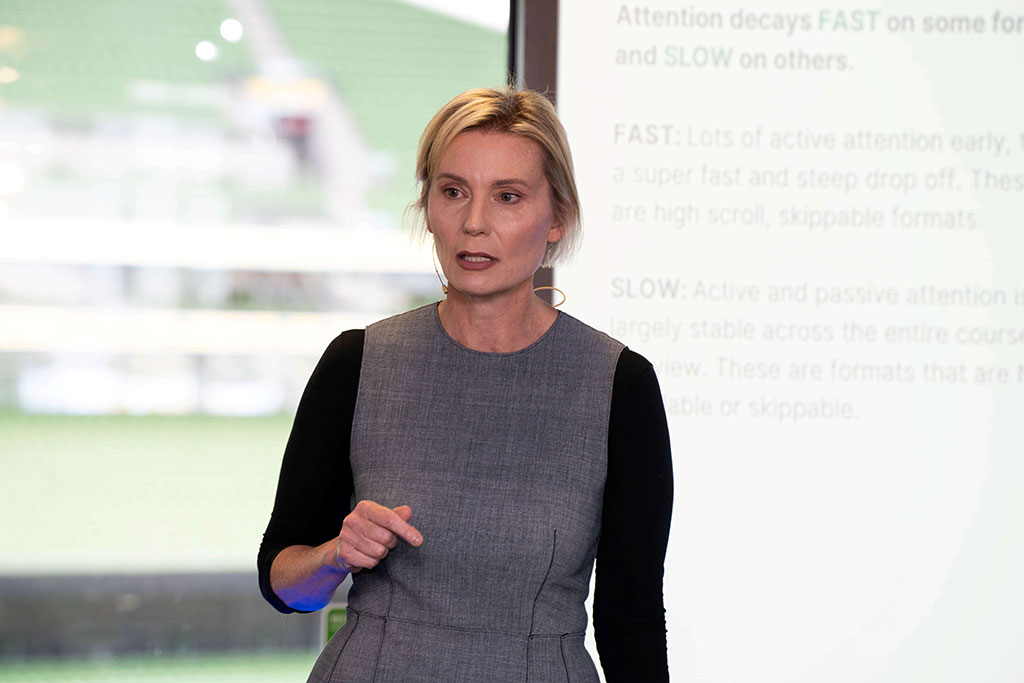
Following on from the publication last week of new research into AV attention by TAM Ireland, Richard Colwell, managing director of RED C, which conducted the research Amplified Intelligence, looks at some of the key learnings for brands and advertisers.
The TAM Ireland AV attention study, conducted by RED C and Amplified Intelligence, and launched by Karen Nelson-Field in Dublin last week, brings key learnings for brands when considering attention as part of their reach vs. cost equations.

Some may say that it isn’t a surprise that a study conducted for the organisation that promotes TV as a media platform, found that TV generates more attention than other media. In reality this study was conducted using the same metrics RED C and Amplified Intelligence use across other media, and provides a clear comparison of TV vs. social media, so enables brand owners to maximise impact using different platforms.
In an era where the “death of television” is a constant refrain, this evidence-based research provides timely reminder of how valuable it is. So, what are the key lessons from brands across this and the social media work we conducted last year?
Driving Effective Advertising
Irish Linear & BVOD TV are strong platforms for driving effective advertising and brands should utilise this where possible. The study found that audiences watch ads for longer than in other markets and are more engaged. It also showed that exposure to advertising on Linear and BVOD TV drove an average 30% uplift in brand choice, with really good ads doing significantly better than this.
Longer Ads Work Harder
Longer ads work harder on TV in terms of gaining attention, and this is in total contrast to social media. High decay in attention on social media suggest brands should use this platform to reinforce brand assets but not tell long stories, while slow decay of attention on TV means this media platform is much better for telling stories that last the length of the ad. It also showed that the length of the ad doesn’t matter, so you can get your story across in 30 secs or 90 secs, whichever works for your brand.

The Role of BVOD
While it has much lower reach at present, which should be taken into account when comparing vs. linear or social, BVOD is a key platform to grab attention and encourage people to spend time with brand. This is mainly because BVOD is clearly destination of viewing a specific programme, and so attention is greater than when the TV is simply on in the background. This is amplified further still with mobile BVOD as engagement is at its highest when someone decided to watch a programme on BVOD on mobile, there are few distractions.
Linear’s Passive Attention
The higher levels of passive attention on Linear TV, also reinforces the need for brands to have strong aural assets, to help drive impact of ad spend in moments when ads are consumed passively. If people are only passively paying attention to our ads on Linear, then we can at least reinforce brand memory structures through aural assets. This is similar to what we saw on social, where fast decay and passive attention, but low levels of people scrolling with sound, mean that strong visual brand assets are really important on that platform.
Targeting Youth Audiences
Reaching younger audiences is a constant challenge and their use of linear has been in decline. But what is interesting is that if you can reach them on Linear, with good targeted ad spots, the study found they pay much more attention to ads on TV than any other demographic. While difficult to reach, if you do reach them with the right programming, you get very good attention levels.
Better programme content on TV drives better ad impact, making choice of ad spots for your campaign much more important. Emotionally strong content has most impact and while genres like comedy and sport do well overall, it is important to consider individual programming within genre. For example, in the study lean forward sport (the rugby world cup matches) gained much better levels of attention than lean back sport (the Ryder Cup), and movies performed much better than sitcoms in comedy.
Attention to Devices
Levels of attention are driven first by device being used, then platform and format. Creative has a relatively small impact on attention. That doesn’t mean it can’t have an impact, but generally it doesn’t have a major one. Emotion in creative again is shown to be the main factor that helps to drive impact, particularly on high attention media. Creative is also of course very important in driving brand choice, once attention has been captured.
Targeting Light Users
Finally, you can target light users quite effectively on TV platforms. This is because as light users they haven’t found ways to dodge the ads, heavy users get to know a platform and how to pay less attention to ads, light users generally pay more attention to ads.
Fundamentally, understanding attention better will help brands to maximise the impact of spend on various platforms. TV garners greater attention and allows brands to tell stories; while social has a good cost to reach incentives and can be used to help reinforce brands mental availability through strong use of distinctive assets.
As always, a combination of media seems to be the best way forward, using strong distinctive assets, both visual and aural, to capture passive attention. Storytelling on TV and BVOD, with careful programme choices, and reinforcing memory structures on social, with early branding.
Richard Colwell is CEO of RED C Research
To download a copy of TAM Ireland’s research “9 Reasons to Pay Attention to TV” click https://www.tamireland.ie/downloads/9-reasons-to-pay-attention-to-tv/




















